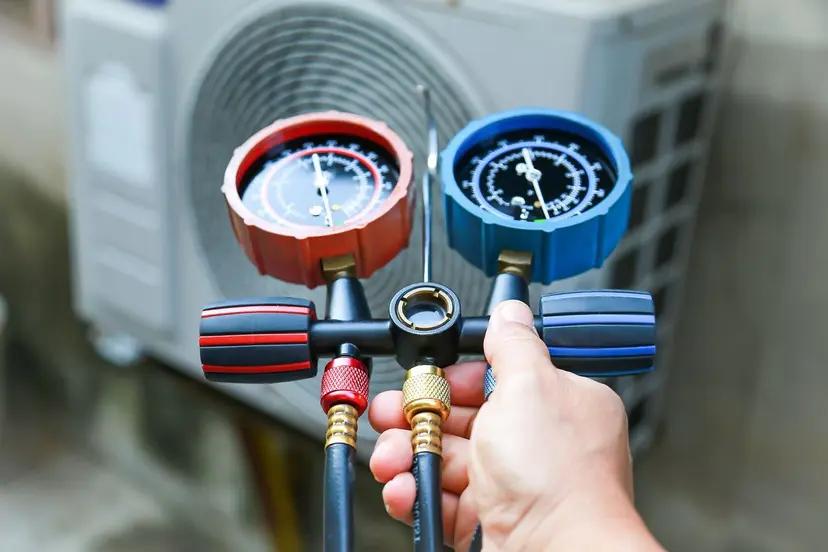
Refrigerants 101: Navigating the HVAC Coolant Landscape
Sharing your quote takes less than a minute

New Environmentally Friendly Refrigerants Paving the Way for Sustainability
About 15% of the world’s greenhouse gas emissions come directly from heating and cooling homes, businesses, and schools. This substantial figure is expected to increase as more people worldwide turn to air conditioning for the first time in response to rising temperatures.
Leading HVAC companies are actively addressing these environmental concerns by, most notably, integrating new, greener refrigerants. This proactive approach has the potential to revolutionize cooling methods, paving the way for a more sustainable future.
Understanding the Purpose of HVAC Refrigerants
Refrigerants serve as the lifeblood of cooling systems such as central air conditioners, heat pumps, and ductless mini-splits, enabling the transfer of heat and facilitating the cooling process essential for maintaining indoor comfort. Refrigerants extract heat indoors by evaporating at low pressure, absorbing thermal energy from the indoor air, and then releasing it outdoors as they condense at high pressure. The cycle repeats until the desired temperature is reached.
Older refrigerants such as R-22 (Freon) and R-410A, known for their high global warming potential (GWP), are being phased out and replaced by more eco-friendly alternatives such as R-454B refrigerant to limit their contribution to climate change.
R-454B: A Promising New Refrigerant
Leading HVAC companies such as Trane, Johnson Controls, Lennox, and Carrier are transitioning to the more environmentally friendly R-454B refrigerant by the end of Q4 2024 on select systems, a significant step in the slow phaseout of R-410A.
R-454B is more sustainable with a lower GWP and zero ozone depletion potential (ODP). R-454B is a mix of R-32, a hydrofluorocarbon (HFC), and R-1234yf, a hydrofluoroolefin (HFO), according to Trane.
Manufacturers tested R-454B refrigerants in the U.S. Department of Energy’s Cold Climate Heat Pump Challenge, where it showcased exceptional performance and surpassed efficiency requirements. This eco-friendly alternative to R-410A features 78% less GWP, which is below the Environmental Protection Agency’s 700 GWP limit which goes into compliance on Jan. 1, 2025, for new residential and light commercial air conditioning and heat pump systems, according to the EPA.
What Homeowners Should Know About Older Refrigerants
Understanding the impact of refrigerant choices is crucial for homeowners. Upgrading cooling systems that use R-22 is recommended to comply with regulations and lessen environmental harm.
Since the government banned R-22’s production in 2010, only recovered or recycled supplies are now available. If your cooling system uses R-22 and develops a leak, replacement is highly advised due to the high cost of recharging it, ranging from $200 to $600.
R-22’s replacement, R-410A, is found in the majority of today’s cooling systems. While it lacks ozone-depleting properties, it has a higher global warming potential than R-22 and poses environmental risks if it leaks due to operating at high pressures. For this reason, R-410A is also being phased out, which started with a 90% production allowance in 2022 that drops to 15% in 2036.
While supplies of R-410A are expected to be plentiful for years to come, HVAC manufacturers will stop producing cooling systems, including heat pumps and air conditioners, that use R-410A in 2025.
What If Your Cooling System Uses a Phased-Out Refrigerant?
If you’re deciding whether to repair or replace your cooling system, particularly in the case of a refrigerant leak, consider the following factors:
The System’s Age
Most central air conditioners and heat pumps have a shelf life of about 15 years. If your air conditioner is more than 10 years old and needs an expensive repair, such as a refrigerant recharge, consider upgrading to a new, more environmentally friendly unit. However, if the system is less than 10 years old and uses R-410A, a repair may be a viable option.
Cost of the Repair
When choosing between repairing or replacing a system with R-410A, take into account the system’s age, its efficiency, and the warranty status. Homeowners can use the $5,000 rule as a guide. Multiply the cost of recharging the refrigerant by the age of the unit; if it’s less than $5,000, a repair may suffice, and if it’s over that figure, lean toward replacement.
Here’s an example of how to use the $5,000 rule:
- Cost of repair: $500
- Age of unit: 12 years
- $500 X 12 = $6,000 (the result is more than $5,000, so replace the system)
It Uses R-22
If your unit is still reliant on R-22, it’s at least 15 years old and should be replaced if it requires a repair. As previously mentioned, due to its limited availability, R-22 can cost more than $500 to recharge and some HVAC technicians don’t work with it anymore. Instead, opt for a new air conditioner equipped with R-410A, or consider waiting until 2025 to buy a system featuring R-454B.
It’s Still Under Warranty
The status of an HVAC warranty can significantly sway the decision-making process between repairing or replacing a cooling system. If the warranty is still valid, a repair might be the most cost-effective choice, whereas an expired warranty might justify a full system replacement to avoid future repair costs.
The Future of New HVAC Refrigerants Is Here
The evolution of new refrigerants reflects a concerted effort by HVAC industry leaders to lower environmental impact and foster sustainability. Homeowners facing decisions about repairing or replacing their cooling systems are encouraged to consider factors such as refrigerant type, system age, and warranty coverage to align with both economic and environmental goals.
Sharing your quote takes less than a minute




